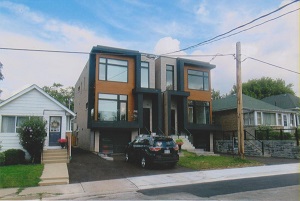 Friday, April 19, 2024
Friday, April 19, 2024  Friday, April 19, 2024
Friday, April 19, 2024 
As reported in The Star, dividing city lots to build two houses on one property is increasingly common and controversial in Toronto. Is this good planning in light of sky high housing prices and a lack of land for development? Cherise Burda of the Ryerson City Building Institute argues yes, while David Godley, a retired city planner, argues no.
Toronto is facing a housing affordability crisis and single-detached neighbourhoods are, unfortunately, growing increasingly exclusive. Meanwhile, our population is growing fast. Adding new housing throughout the city, including in desirable residential neighbourhoods made up of mostly detached houses, is key to supporting a healthy, inclusive region.
As it stands, only the wealthiest of Toronto’s residents can afford to buy a detached house. A recent Zoocasa study found that only the top 10 per cent of GTA residents could afford a “benchmark house,” costing $873,100. Detached houses in Toronto are even more expensive, selling for $1.35 million on average.
Advertise YOUR business on Construction Links Network – Download the media kit
Over the next 25 years we are expecting about 1 million new neighbours. And, over the next 50 years Toronto’s population is on track to double. In simpler terms anywhere we currently have one housing unit we will need two.
This combination of an affordability crisis and rapidly growing population is why city council recently voted overwhelmingly in support of Deputy Mayor Ana Bailão and Mayor John Tory’s motion to study opportunities to accommodate new forms of housing in our residential neighbourhoods.
Adding gentle density to detached-residential neighbourhoods is critical. These areas occupy approximately 70 per cent of the total land zoned for residential uses in the city. Restricting these neighbourhoods from changing and densifying means these areas will become even more exclusive than they already are.
Furthermore, if we expect families and other large households to continue to find a home in Toronto we are going to need to build more than just tall condos in high growth nodes. This means finding ways to encourage and allow other forms of housing, like new laneway units, townhouses, multiplexes and lowrise apartments.